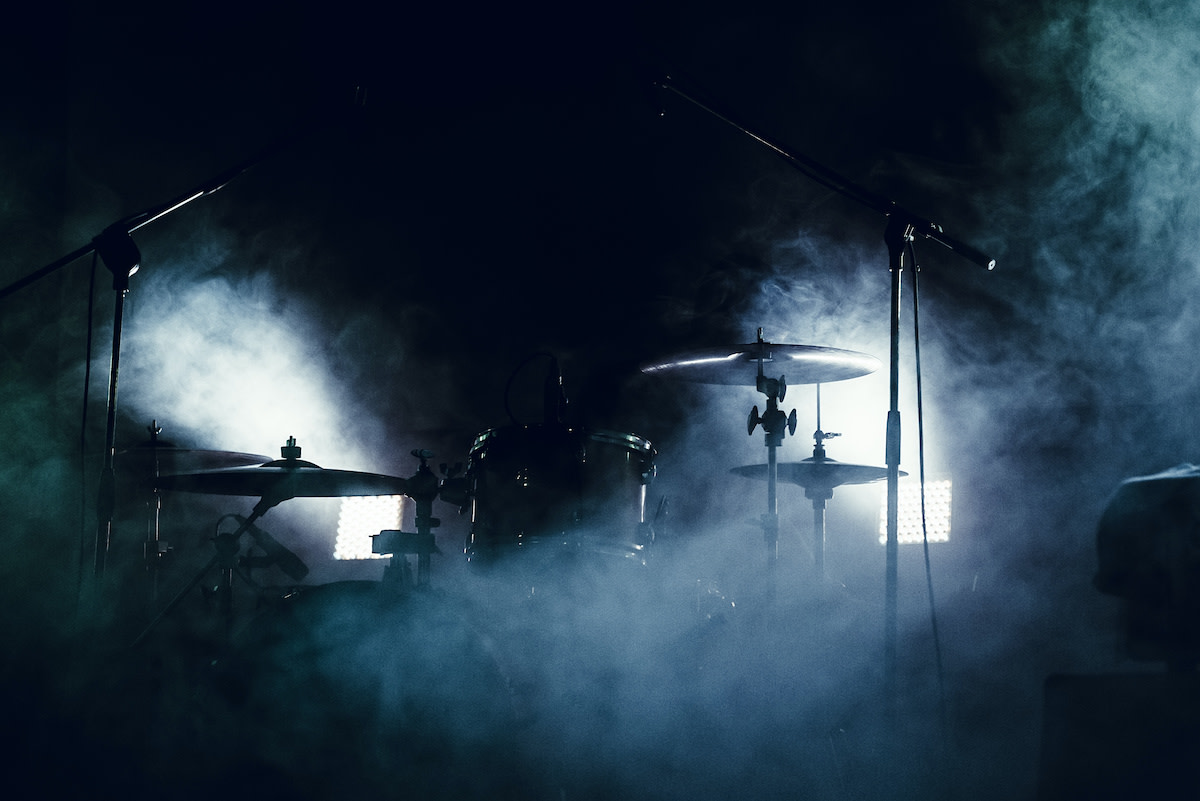Dark Wave: History and Sound of Dark Wave Music
Written by MasterClass
Last updated: Sep 27, 2021 • 4 min read
Moody goth atmospherics, post-punk energy, and new wave hooks all join together in a genre known as dark wave.
Learn From the Best
What Is Dark Wave?
Dark wave, sometimes written as darkwave, is a type of rock music that brings a moody, often depressive sheen to new wave, synthpop, and post-punk music. It emerged in avant-garde rock scenes of the late 1970s and early 1980s—most notably in the United Kingdom, France, and Germany, and in select American cities like New York City.
What Is the Origin of the Dark Wave Genre?
The dark wave music genre was developed in the late 1970s and early 1980s. Early dark wave bands appealed to fans of moody new wave and post-punk acts like Joy Division, Siouxsie and the Banshees, the Cure, Bauhaus, Depeche Mode, Soft Cell, Dead Can Dance, and the Cocteau Twins.
Some of these groups are categorized as dark wave, particularly Joy Division, Cocteau Twins, Dead Can Dance, Bauhaus, and the Cure. However, the genre mostly includes lesser-known indie bands, like Attrition, Cyan Revue, In the Nursery, Clan of Xymox, Girls Under Glass, Lycia, Deine Lakaien, Diary of Dreams, and Black Tape for a Blue Girl. These groups tapped into the despair of gothic rock, creating gloomier music than that of their more famous contemporaries.
3 Characteristics of the Dark Wave Genre
Dark wave stands out among other music genres of the 1970s and 1980s with a few defining characteristics:
- 1. Post-punk energy: Dark wave songs can have slow tempos or moderate tempos, but they are almost never fast. Despite this, dark wave songs often harness the simmering energy inherent in post-punk music as well as mainstream new wave music.
- 2. Gloom: Dark wave bands tend to comprise the gloomier edge of the broader new wave scene. Some dark wavers toe the line of gothic rock and neofolk, including Deine Lakaien, Girls Under Glass, and the early work of the Cure. Others, like Joy Division, simply offer despairing yet introspective lyrics.
- 3. Instrumentation: Unlike related genres, such as cold wave and synth-wave, dark wave musicians build songs around synthesizers, such as In the Nursery, Clan of Xymox, and Attrition. Dark wave music can also be built around guitar, like the Cure and Joy Division. In most cases, dark wave songs include at least one synthesizer, even if the core sound is built around guitar, bass, and drums.
5 Subgenres of New Wave
There are several subgenres of new wave music. Core characteristics of these subgenres include:
- 1. Dark wave: Compared to new wave subgenres, dark wave is best known as a broader genre encompassing the gloomier members of the new wave scene. Dark wave music includes at least one synthesizer, and the songs are built around synthesizers, guitar, bass, or drums.
- 2. Cold wave: The defining characteristics of cold wave music include pristine, almost icy synthesizer sounds, emotionally detached vocal styles, and spare atmospheres built on minimalist arrangements. Cold wave groups include Twilight Ritual, Marquis de Sade, and Asylum Party.
- 3. Synth-wave: Also known as synth pop, synth-wave music encompasses pop bands that base their core sound on synthesizers. Such groups include A-ha, Tubeway Army, Gary Numan, the Human League, New Order, Tears for Fears, Depeche Mode, and the Thompson Twins. (The synth-wave descriptor distinguishes these bands from new wave acts based more around guitar sounds such as Talking Heads, the Cure, and Blondie.)
- 4. Ethereal wave: Ethereal wave adds ambient, gothic, and ethereal textures to new wave music. Many groups categorized as dark wave, such as Dead Can Dance and Cocteau Twins, also appear under the banner of ethereal wave.
- 5. Neoclassical dark wave: Neoclassical dark wave is closely associated with both standard dark wave and ethereal wave music. It traditionally adds flourishes of classical harmony and instrumentation and soprano lead vocals. In the Nursery is an example of neoclassical dark wave music.
5 Notable Dark Wave Bands
A comprehensive list of dark wave artists will include both mainstream successes and obscure indie acts. Some genre-defining groups include:
- 1. Dead Can Dance: Australian duo Dead Can Dance draw musical inspiration from a variety of world cultures, but records like 1985's Spleen and Ideal focus on an almost gothic neoclassical dark wave approach. By 1987's Within the Realm of a Dying Sun, the group transitioned from guitar-based music to synth-based songwriting. Over many decades, the group has been among the more commercially successful dark wave acts.
- 2. In the Nursery: Hailing from Sheffield, England, In the Nursery is a neoclassical dark wave band known for building cinematic atmospheres using synthesizers, samplers, and drum machines.
- 3. Cocteau Twins: From their founding in 1979 to their breakup in 1997, Cocteau Twins combined dream pop, goth rock, dark wave, and ethereal wave music. They scored one of the genre’s more popular hits, with 1984's "Pearly-Dewdrops' Drops."
- 4. Kirlian Camera: A prominent act in Italy's large dark wave scene, Kirlian Camera ranges from synth pop to electro-gothic music. Some of the group’s more recent records feature industrial, electronica, and trip hop sounds.
- 5. The Frozen Autumn: Another Italian dark wave band, the Frozen Autumn formed in 1993 and immediately showed the influence of Dutch band Clan of Xymox, their labelmates on Pandaimonium Records. Led by Diego Merletto, the group's music leans heavily on synthesizers and programmed drum machines as opposed to live instruments.
Want to Learn More About Music?
Become a better musician with the MasterClass Annual Membership. Gain access to exclusive video lessons taught by the world’s best, including St. Vincent, Christina Aguilera, Sheila E., Timbaland, Itzhak Perlman, Tom Morello, and more.
